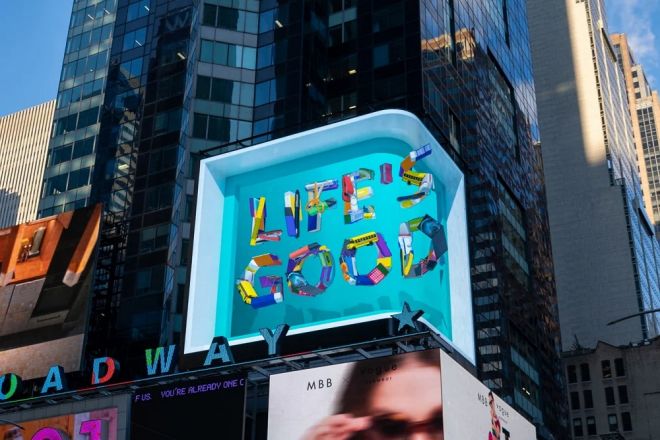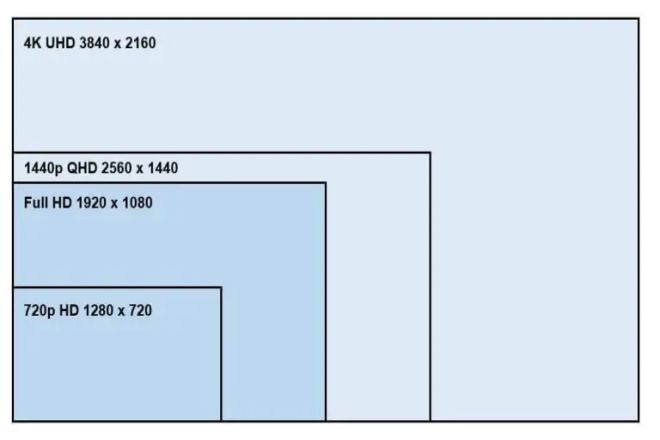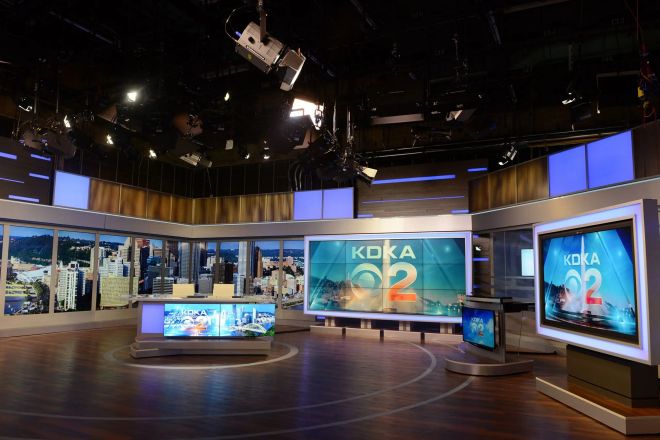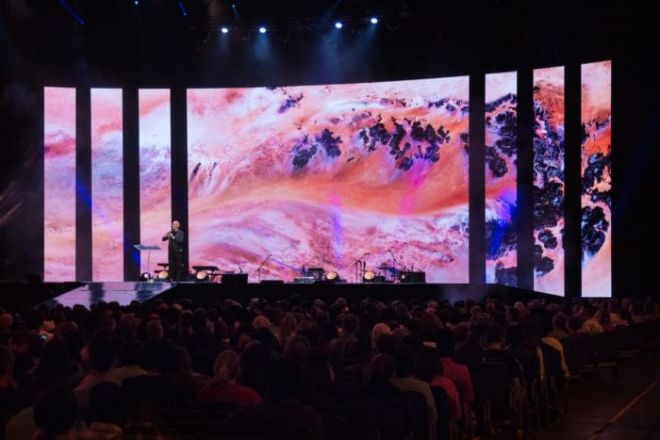Introducción

Como medio importante para la difusión de información moderna, Pantalla LED is widely used in commercial advertising, public information releases, conference displays, and other fields.
With the continuous progress of technology, there are many kinds of LED displays on the market with different performances, which makes it particularly important to choose a suitable LED display.
Choosing the right LED display is not only related to the accurate and efficient dissemination of information but also directly related to the brand image and user experience of the enterprise.
Therefore, we need to have an in-depth understanding of the performance indicators, application scenarios, certification standards, and brand services of LED displays in order to make informed decisions.
1. What factors need to be considered when buying an LED display?
When we consider buying an LED display, we are actually choosing a large screen that can display and transmit information. But there are many types of such screens and different prices, so we have to consider some key factors to ensure that we choose the one that best suits our needs.
En primer lugar, we need to know whether the display is placed indoors or outdoors. If it is outdoors, it has to be able to withstand the wind and rain, so the waterproof and dustproof level is higher. In this way, the display can work normally, even in rainy or dusty places.
En segundo lugar, we need to consider the size and clarity of the display. If the viewer is far away, we need a larger display screen with higher resolution so that everyone can see it clearly. On the contrary, if the viewer is very close, you can choose a smaller display with moderate resolution.
Again, we want to see the display effect of the display screen. For example, whether its color is bright and its contrast is high will affect our viewing experience. Especially for those who need to watch the display for a long time, it is especially important to choose a display with good visual effects.
Además, we should also consider the durability of the display. After all, we bought a display screen in the hope that it can be used for a long time, rather than breaking down after a period of time. Therefore, we should choose those display screens with good materials and stable structure so that they can accompany us for a longer time.
Of course, we also need to pay attention to some certifications and standards. These certifications and standards can tell us whether the display screen meets the relevant safety, environmental protection, and other requirements, and it will be more reassuring to use.
Finalmente, brand and service are also very important. Choosing a well-known brand will not only ensure the quality but also improve the after-sales service. In this way, even if we encounter problems in the process of use, we can get timely help.
2. How to determine the correct size and resolution of the LED display?

Determining the correct size and resolution of the LED display is a process that needs to consider multiple factors. Here are some suggestions to help you make an informed choice:
1). Determine the size:
Usage scenario: First of all, consider the display’s usage scenario. Is it used indoors or outdoors? Different environments have different requirements for the size of the display. For example, the outdoor environment may require a larger display for long-distance viewing.
Distancia de visualización: Determine the average viewing distance between the audience and the display. This will directly affect the size of the display. Usually, the farther the viewing distance, the larger the size of the display required.
Installation space: Measure the space of the installation display to ensure that the size of the selected display is suitable for this space. At the same time, the installation method and location of the display should be considered to ensure that the audience can watch it comfortably.
2). Determine the resolution:
Display content: Consider the type of content to be displayed on the display. Text, image or video? Different content types have different resolution requirements. For example, video content usually requires higher resolution to maintain clarity.
Viewing distance and clarity: Resolution is also related to viewing distance. If the audience is close to the display, a higher resolution is needed to ensure the clarity of the image.
Technical specifications: Understand the technical specifications of the LED display, including its maximum resolution and pixel density. Ensure that the resolution of the selected display can meet your needs and is within the budget.
3). Other considerations:
Espaciado de puntos: Point spacing is the distance between adjacent pixels in the LED display. Smaller point spacing means higher resolution and clearer images. When selecting the display, point spacing can be considered to evaluate its resolution and clarity.
Module and box resolution: The LED display is usually composed of multiple modules or boxes. Knowing the resolution of each module or box helps to calculate the total resolution of the entire display.
3. What is the cost of buying an LED display?
The cost of purchasing an LED display is a relatively complex problem that involves many aspects and needs to be evaluated in detail according to specific needs.
- Cost of the display body
The price of an LED display varies according to size, resolution, brightness, color reduction, material, and other factors. Generally, the larger the size, the higher the resolution, and the higher the brightness, the higher the price will increase accordingly.
At the same time, high-quality materials and manufacturing processes will also increase costs. In addition, the cost of specially customized displays, such as special-shaped screens, transparent screens, etc., will also be higher than ordinary standard screens.
- Cost of additional equipment
In addition to the display body, you also need to buy some additional equipment, such as a control system, signal receiving card, sending card, power supply, cable, etc.
These devices are key components in ensuring the normal operation of the display, and their quality and performance will also affect the overall effect and service life of the display.
- Costes de instalación
The installation of LED displays requires professional technicians to operate, including bracket production, display installation, debugging, etc. The installation cost will vary according to the size of the display screen, the complexity of the installation environment, and the height of the installation location.
For large or complex installation projects, additional engineering costs may also need to be considered.
If the display screen needs to be transported from the supplier to the installation location, the transportation cost is also a cost that cannot be ignored. The transportation cost will vary according to the size, weight, transportation distance, and mode of transportation (such as land, sea, or air) of the display.
- Taxes and other fees
The purchase of LED displays may also involve some taxes and other expenses, such as tariffs, value-added tax, insurance premiums, etc. These fees will vary according to the specific place of purchase and tax policy.
- Costos de mantenimiento
In addition to the initial purchase cost, the maintenance cost of the LED display also needs to be considered. This includes regular cleaning, maintenance, repair, and parts replacement costs. After long-term use, these costs will also account for a certain proportion.
4. Environmental considerations when selecting the LED display

When choosing an LED display, it is indeed necessary to consider a variety of environment-related factors in detail, of which power consumption and sustainability are two crucial aspects. The following is a detailed analysis of these two aspects:
1). Consideration of power consumption
Power consumption is the power consumed during the operation of the LED display, which has a significant effect on operating costs and environmental impact. When selecting the LED display, its power consumption characteristics should be fully considered to ensure that energy consumption is reduced as much as possible while meeting the needs of use.
Model and power consumption:
The power consumption of different models of LED displays varies greatly. Generally speaking, the power consumption of high-resolution and high-brightness displays will be relatively high. Therefore, when selecting, the relationship between resolution, brightness, and power consumption should be weighed according to the actual needs and usage scenarios.
Battery efficiency:
The battery efficiency of LED displays is also an important factor affecting power consumption. Efficient batteries can enable the display to consume less electricity under the same conditions. Therefore, choosing an LED display with high battery efficiency can effectively reduce power consumption.
Energy-saving technology:
Some advanced LED displays use energy-saving technologies, such as automatic brightness adjustment, hibernation mode, etc. These technologies can effectively reduce the power consumption of the display without affecting the use effect.
2). Sustainability considerations
While pursuing economic benefits, environmental protection and sustainability have also become important considerations for more and more customers when choosing LED displays.
- Environmentally friendly materials:
High-quality LED display screens should be made of environmentally friendly materials to ensure that harmful substances will not be released during use and cause harm to the environment and human health.
- Eficiencia de utilización de energía:
The LED display has a high energy utilization efficiency, and its energy consumption is lower than the traditional display. Therefore, choosing an LED display can help reduce energy consumption and reduce carbon emissions.
- Recycling and recycling:
Considering the recycling and recycling of LED displays is also a manifestation of sustainability. High-quality display products should have good repairability and replaceability to reduce the waste rate. At the same time, manufacturers should provide reasonable recycling solutions to ensure that the waste display screens are properly disposed of and reduce the impact on the environment.
3). Consideration of special environmental factors
For specific use environments, such as seaside riverside, some additional environmental factors need to be considered:
- Waterproof performance:
The environment by the seaside is humid, and it is easy to enter water, so the waterproof performance of the LED display is very important. When selecting, you should ensure that the display screen has a good waterproof design to prevent moisture from entering and causing failure.
- Anti-UV ability:
The strong ultraviolet environment is prone to aging of the surface material of the LED display, affecting the service life. Therefore, it is very important to choose a display product with excellent UV resistance.
- Wind impact:
The wind at the seaside river is relatively strong, which puts forward higher requirements for the installation stability of the display screen. When installing, the impact of wind power should be fully considered to ensure that the display can be firmly installed in the designated location.
5. What is the delivery time for ordering and receiving custom LED displays?

The delivery time also needs to be understood in advance, which is related to whether the LED display you purchased can be delivered at the time you want.
The delivery time for ordering and receiving customized LED displays varies according to a variety of factors, including but not limited to the area size and model of the LED display, as well as whether it is an indoor LED display or an outdoor LED large screen.
Generally speaking, the process of customizing the LED display screen can be divided into three stages: pre-sales, production and transportation, installation and commissioning.
The pre-sales stage generally takes 1 to 7 days to confirm the requirements, specifications, and other details. Then, there is the production and transportation stage of the LED display, which usually takes 8 to 10 days.
Finally, the installation and commissioning stage of the LED display generally takes 11 to 12 days. Therefore, from consultation to installation completion and put into use, the whole process of customizing the LED display under normal circumstances will take about a month.
However, this is only a general estimate. The actual delivery time may change according to factors such as specific customization requirements, the manufacturer’s production capacity and order volume, the smoothness of logistics and transportation, and the actual situation of the installation site.
Therefore, when ordering customized LED displays, it is recommended to communicate with the supplier or manufacturer in detail to understand the exact delivery time.
6. How can the reputation and performance record of LED display manufacturers or suppliers be evaluated?

Assessing the reputation and performance records of LED display manufacturers or suppliers is an important step to ensure the purchase of high-quality products. Here are some suggested methods:
1). Online search and reference:
Use search engines to find news reports, customer reviews, and industry analyses about target manufacturers or suppliers
Check industry forums, social media, and professional websites to learn about the comments and feedback of other users or customers regarding suppliers.
2). View customer cases and references:
Ask suppliers to provide past customer cases and success stories to understand their performance in different projects.
Try to contact these customers to find out their real comments on the supplier’s products and services.
3). Ask industry experts and peers:
Consult with experts or peers in the industry to find out their views and recommendations from target manufacturers or suppliers.
Participate in industry exhibitions or events, communicate with suppliers face-to-face, and observe their performance and influence in the industry.
4). Inspect supplier qualification and certification:
Check whether the supplier has relevant industry qualifications and certifications, such as ISO 9001 quality management system certification.
Understand the supplier’s R&D capabilities, production processes, and quality control systems to ensure the reliability of their products.
5). Evaluation performance record:
Check the supplier’s performance reports or financial statements to understand their business size, growth trends, and profitability.
Understand the supplier’s on-time delivery, after-sales service, and problem-solving ability in past projects.
6). Inspect the supplier’s production site:
If possible, you can inspect the supplier’s production site on the spot and observe its production process, equipment status, and management level.
Understand the supplier’s selection of raw materials, control of the production process, and product testing process.
7). Consider the contract and after-sales service:
Read the terms of the contract carefully to ensure that the supplier has a clear commitment in terms of product quality, delivery time, and after-sales service.
Understand the service content of the supplier’s after-sales service policy, maintenance support, and technical training.
Conclusión
I believe that you should already know how to buy an LED display. If you want to know more about LED displays, Por favor póngase en contacto con nosotros.
